#california spiny lobster
Explore tagged Tumblr posts
Text
California Spiny Lobsters (Panulirus interruptus) in shallow water at Moss Cove in Laguna Beach. My friend saw these around the corner before I did and said she thought she needed glasses because she couldn't believe she was looking at lobsters. We crawled across the rocks as close as we could and I even waded into the water to confirm they were lobsters. It's typical to find lobster molts on the beach, but we had never seen living lobsters especially in shallow waters.
From wikipedia:
"California spiny lobsters are nocturnal, hiding in crevices during the day, with only the tips of their long antennae showing, as a means of avoiding predators. Towards dawn, the spiny lobsters form aggregations, which they maintain until dusk. At night, they emerge and feed on sea urchins, clams, mussels and worms. This activity is important in limiting sea urchin populations, and so maintaining healthy seabed communities."
"There is an annual migration, in which spiny lobsters enter shallower water in spring and summer, and head out to deeper water in fall and winter, reaching depths as great as 240 ft (73 m), perhaps to avoid the effects of winter storms."
#Panulirus interruptus#california spiny lobster#california#california spiny lobsters#laguna beach#moss cove#marine biology#ocean
29 notes
·
View notes
Note
Trick or treat!

For RedRock, a red rock lobster! I hope you enjoy your California spiny lobster!
(img src)
32 notes
·
View notes
Text

A California spiny lobster (Panulirus interruptus) in Channel Islands National Park, California, USA
by Water Planet
#california spiny lobster#spiny lobsters#lobsters#crustaceans#panulirus interruptus#panulirus#Palinuridae#decapoda#malacostraca#arthropoda#wildlife: california#wildlife: usa#wildlife: north america
43 notes
·
View notes
Note
Do you have any lobsters? My friend loves lobsters
DO I HAVE ANY LOBSTERS?!?!
I HAVE SO MANY LOBSTERS...
Let me show you... Here, let's have a look at lobsters from 3 different taxonomic groups...
SPINY LOBSTERS (family Palinuridae)
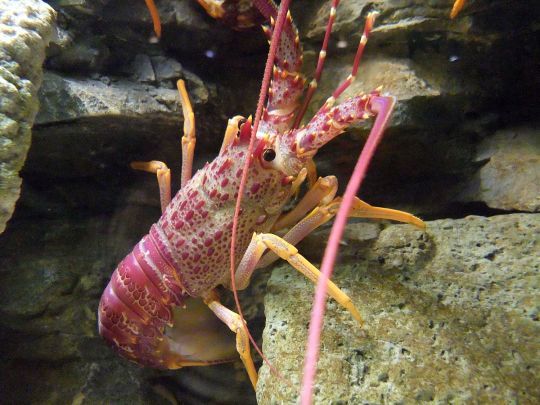
Southern Rock (Spiny) Lobster (Jasus edwardsii), family Palinuridae, found in coastal areas around Australia and New Zealand
photograph by Stemonitis
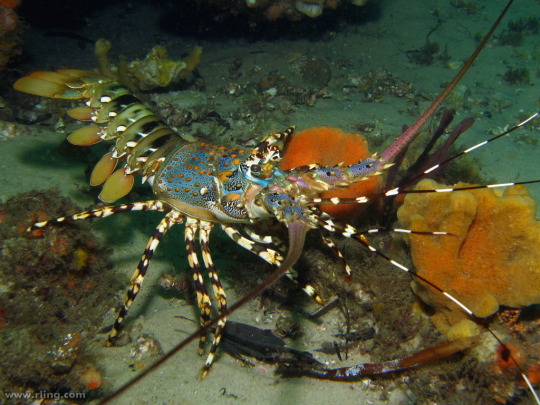
Ornate Rock Lobster (Panulirus ornatus), family Palinuridae, Fly Point, Port Stephens, NSW, Australia
photograph by Richard Ling
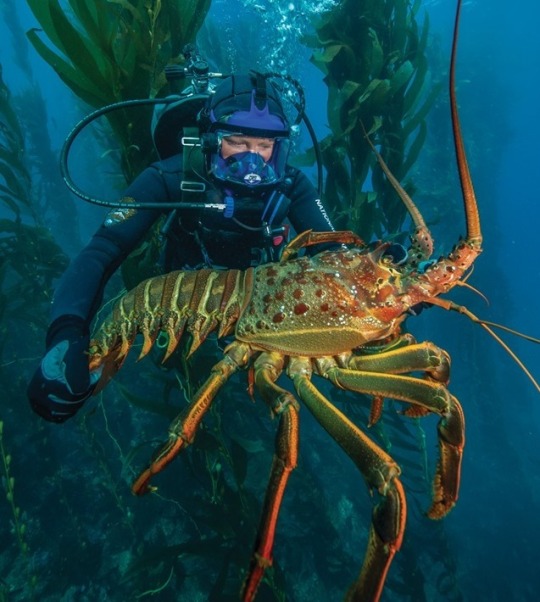
California Spiny Lobster (Panulirus interruptus), family Palinuridae, off the coast of California, USA
photograph by Brett Seymour | NPS
REEF LOBSTERS (family Enoplometopidae)
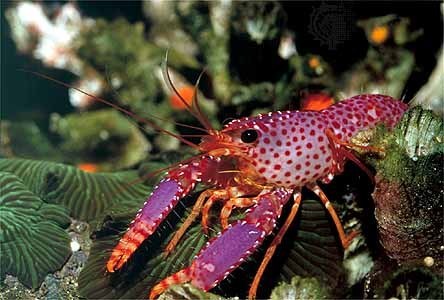
Violet-spotted Reef Lobster (Enoplometopus debelius), family Enoplometopidae, found around the Pacific Ocean
photograph by reef-guardian.com

Atlantic Reef Lobster (Enoplometopus antillensis), family Enoplometopidae, found in warmer parts of the Atlantic Ocean
photograph by Fernando Herranz Martín
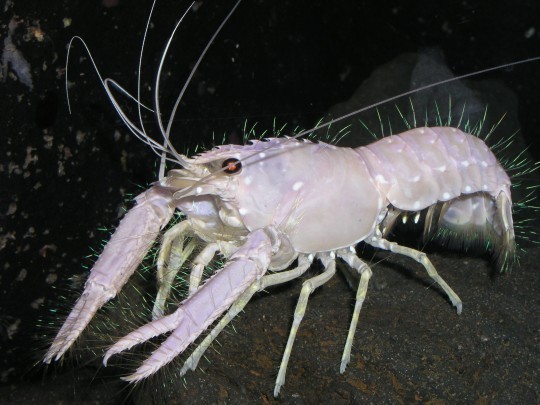
Hawaiian Red Reef Lobster (Enoplometopus occidentalis), family Enoplometopidae, Hawaii
This species is normally red, but this individual has just molted.
photograph by Drew R. Smith
TRUE or TYPICAL LOBSTERS (family Nephropidae)

European Lobster (Homarus gammarus), family Nephropidae, found in the eastern Atlantic
photograph by H. Zell
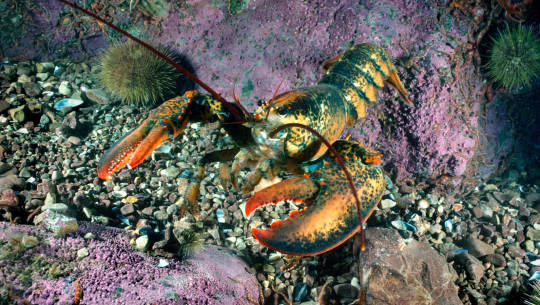
American Lobster (Homarus americanus), family Nephropidae, found off the Atlantic coast of the NE U.S. and eastern Canada
photograph via: University of Maine
#lobster#decapod#crustacean#spiny lobster#reef lobster#ocean#homarus#nephropidae#Enoplometopus#Enoplometopus occidentalis)#family Enoplometopidae#Panulirus#palinuridae#jasus#aniamls#nature
454 notes
·
View notes
Text

Commissioned on dA! Interested in commission me? Check out here if interested! Meet this beautiful California Spiny Lobster (Panulirus interruptus)! I'm very proud how it turned out tbh! I hope you guys like it ^^
66 notes
·
View notes
Text
California Spiny Lobster Season is Here- Updated 2024 – San Diego Beach Secrets (70milesofcoast.com)
CA Spiny Lobster Season is almost here! Find out when, how and where to find these elusive 'bugs'- #CaliforniaSpinyLobster #Lobster #RockLobster #LobsterSeason2020/2021 #SouthernCaliforniaLobsterSeason #SanDiego #SanDiegoLobster #California #SouthernCalifornia #Invertebrates #RockyIntertidal #Piers #Fishing #LobsterFishing #Bugs #Ocean #Beach #LobsterFishingSanDiego #HoopNets #PacificOcean #SanDiegoBay #MissionBay #OceanBeachPier #ZunigaJetty #Jetty #jetties #Sportfishing #RecreationalFishing
0 notes
Note
Did you think we’d forgotten about you this MerMay? This year we’ve decided to assign our ‘participants’ a specific marine critter. For you we’ve chosen the California Spiny Lobster.
You have a segmented tail covered with reddish brown, bumpy armour plates. The tail ends in that classic lobster fan shape it’s a deep brown in color and edged with a thin line of orange.
Of course this will end when MerMay is over. Have fun!
Kat looked puzzled at the cryptic yet detailed message on her phone before feeling like her legs were trapped together, making her fall on her face.
"AH SHIT FUCK!!!"
Glancing back, she looked at the interesting fin where her legs were, blinking in surprise before absolutely screaming at the top of her lungs.
0 notes
Text
Off the coast, Spiny Lobster go about their days, their brilliantly colored shells and large antenna distinguishing them from the Lobster I sell at Work. That Lobster grew in waters many hundreds of miles north, on the other side of Canada, in Alaska. Our California Spiny Lobster is worth 3x as much in China, and most of those caught will be shipped there to be consumed. Petroleum will be burned both ways; refrigerators and freezers running all the while. Much of the lobster I defrost does not sell, not for $45/lb, and inevitably will be thrown away, uneaten.
Behind my home winds an Arroyo. Elephant Grass, an escapee from the landscaping of some wealthy immigrant upstream, spreads downstream each year. Far from its home range in the foothills of the Himalayas, there is no Monsoon Season to break up the strands, and it does not flower. I wonder if the entire strand is a single organism. Each winter, the frosts kill everything above ground, leaving ten foot tall tinder to split and fray in the sun.
412 notes
·
View notes
Photo
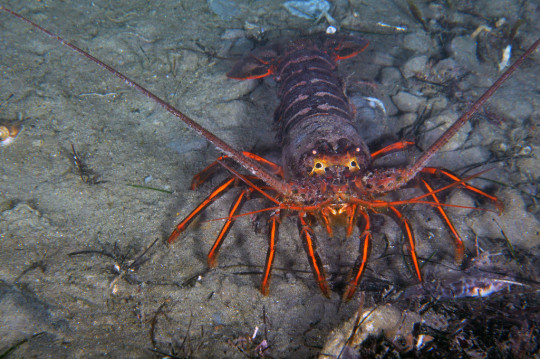
California spiny lobster (Panulirus interruptus)
Photo by David R. Andrew
#california spiny lobster#spiny lobster#panulirus interruptus#panulirus#palinuridae#achelata#pleocyemata#decapoda#eucarida#eumalacostraca#malacostraca#multicrustacea#crustacea#pancrustacea#arthropoda#panarthropoda#ecdysozoa
44 notes
·
View notes
Photo







Sorry to bug you, but we’re thinking this is a good time to show some appreciocean for the marvelous California spiny lobster. 🦞❤️
youtube
#monterey bay aquarium#california spiny lobster#lobstar of the show#a sea bug's life#spiny the elder
961 notes
·
View notes
Photo

California Spiny Lobster (Panulirus interruptus)
Specimen origin indeterminate
To help support the preservation of our collection click here.
1 note
·
View note
Photo
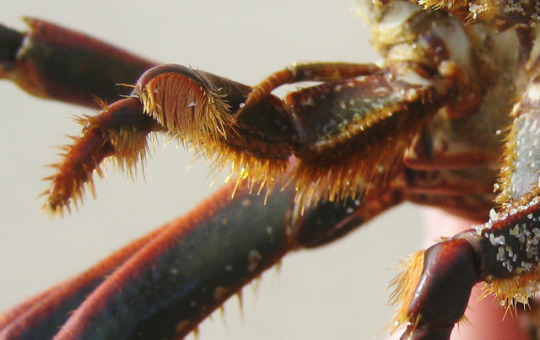
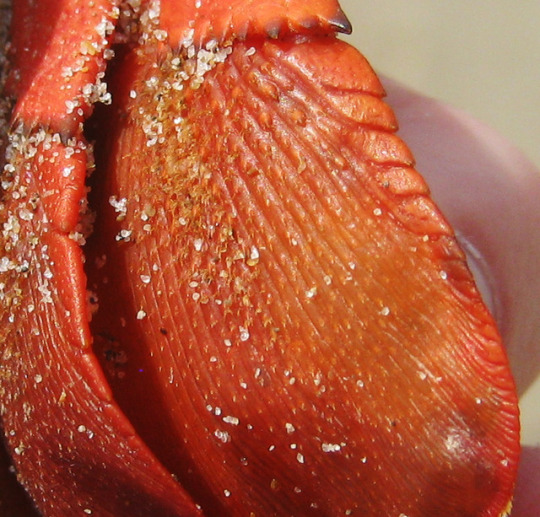

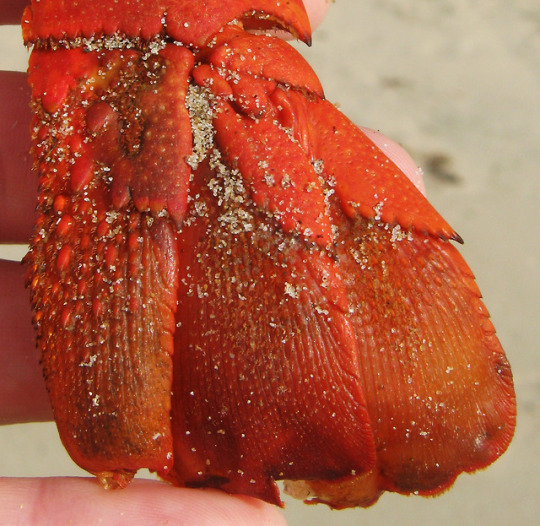
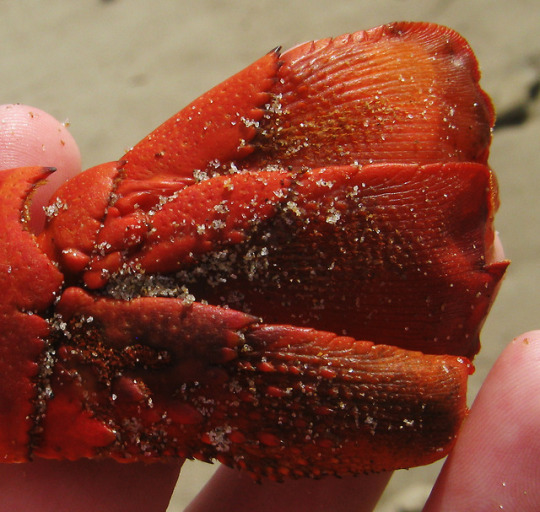
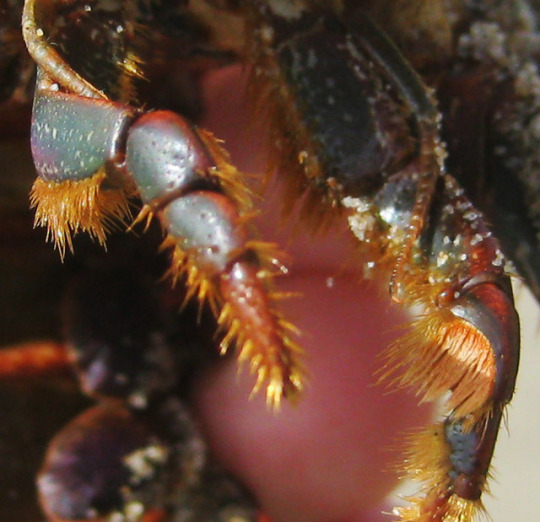
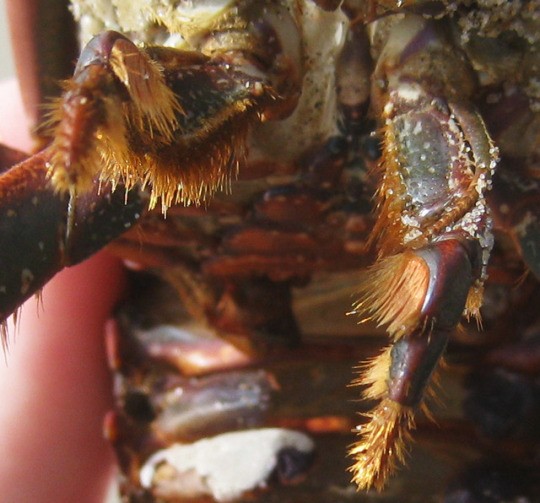
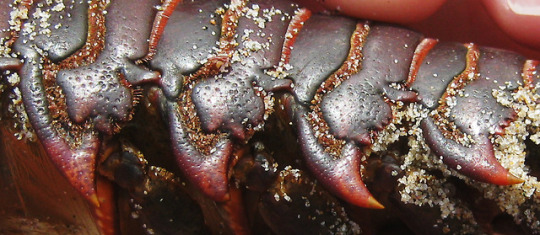
California spiny lobster maxilliped and uropod details, plus abdominal armor. Refugio State Beach, 31 December 2018.
#crustacean#arthropod#invertebrate#lobster#spiny lobster#california#exuvia#moult#molt#shed#exoskeleton#armor#biology#marine#sea#coast#coastal#fauna
3 notes
·
View notes
Photo








2018 March 24 - Cabo Pulmo dive 2 - los morros
#cabo pulmo#cabo pulmo national park#cabo pulmo diving#underwater#scuba#dive#scubadiving#baja california sur#los cabos#mexico#travel#sea of cortez#marine life#marine animals#lobster#blue spiny lobster#facehugger#lv426#reef#selfie#kumimonster#smb#grouper#fish
1 note
·
View note
Text
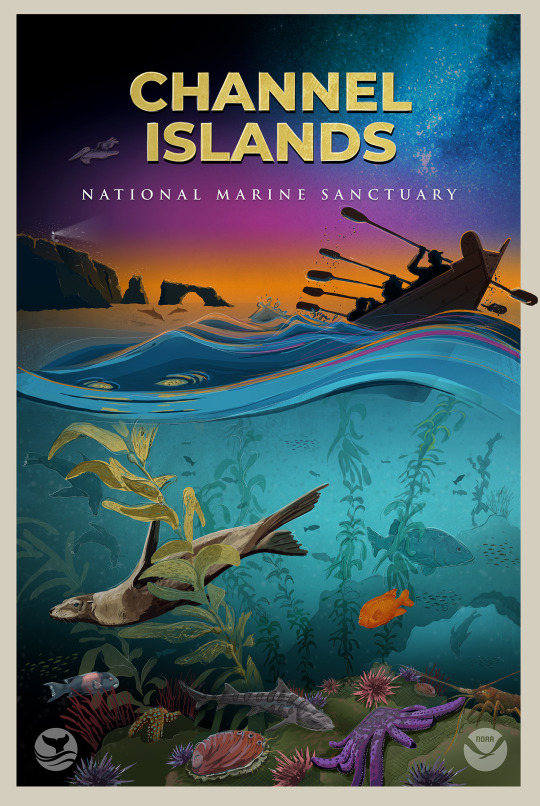
Check out the newest poster in our 50th Anniversary #SaveSpectacular poster series!
November's poster features Channel Islands National Marine Sanctuary, located off the coast of central California. A special place for endangered species, sensitive habitats, historic shipwrecks, and cultural resources, this poster highlights the true beauty and importance of the waters surrounding the Channel Islands.
Take a look for yourself, and download the poster today: https://sanctuaries.noaa.gov/50/#poster
(Illustration by Matt McIntosh/NOAA. Image description: A crew of modern-day Chumash pullers paddle a Tomol (plank canoe) under the milky way and past Anacapa Island's lighthouse and arch rock. Below the waves reveal a kelp forest where California sea lions swim among a garibaldi, leopard shark, white abalone, California spiny lobster, California sheephead, giant sea bass, sea stars, and red and purple urchins.)
#EarthIsBlue#Poster#Ocean#MPA#Sanctuaries#PosterSeries#VintagePosters#Decor#Art#Illustration#ScientificIllustrations#GraphicDesign#noaa
114 notes
·
View notes
Text
Grilled Lobster Himono (Makes 4 Servings)

We bring you this recipe from our panel, “Anime Foodies: Laid-Back Camp Season 2”.
This dried lobster is a special treat that the kids grill up for their first night of camping on the Izu peninsula in Episode 11. Himono lobster is a special and expensive ingredient found in certain parts of coastal Japan with the communities around the Izu Peninsula being well known for it. As there is no publicly available recipe we could find for this, we tried a few different methods for making himono lobster and the following recipe was the one that tasted best.
2 Whole –Spiny Lobsters
9 TSP – Kosher Salt
12 Cups – Water
While at home, mix the salt and water, stir until the salt is fully dissolved, and place into a large food-safe container.
If your lobsters are live, place in the refrigerator for 1 hour before using your preferred method to dispatch them.
Take the lobsters and split them in half down the middle using a heavy knife or heavy duty kitchen shears.
Clear out any clearly visible shell fragments generated in the previous step and then gently submerge the lobster halves into the salt water.
Allow to sit in the salt water for 30 minutes.
After the soaking time is up, remove the lobster halves and drain any excess water, but do not worry about getting it perfectly dry.
Place the lobster halves shell-side down on a rack in the refrigerator, uncovered, for 24 hours.
If the lobster will not be used that day, wrap in aluminum foil and freeze.
For cooking, remove the lobster – previously thawed if necessary – from the fridge and then prepare your grill with whatever coals you’ll be cooking over.
When the coals are ready, spread a small amount of a high heat, neutral cooking oil onto the skin side of the lobster halves and lay them skin side down on the grill for 3 minutes.
Flip the lobster halves to their shell side and cook for 4-5 minutes, remove from the heat, and serve.

Optional/Notes:
For the spiny lobster, you’ll really find two varieties available most commonly stateside: California Spiny Lobster on the West Coast and Caribbean Spiny Lobster on the East Coast. Both varieties are basically the same in taste and either might also be labeled “rock lobster”, so keep an eye out for that.
Kosher salt is being used because the goal of the recipe is to create a 3% brine for the lobster. If you use another kind of salt, you’ll want to measure things by weight to ensure it maintains the appropriate salinity.
If you will be using two lobster tails instead of two whole lobsters, the salt solution recipe can be reduced to 4 1/2 TSP Kosher Salt and 6 cups Water as there is significantly less volume required to submerge the lobster.
If you will be using lobster tails instead of whole lobsters, the cooking time for the skin side will be 2-3 minutes and the shell side 3-5 minutes depending on their thickness. Additionally, if using lobster tails, after flipping to the shell side, use a small amount of foil to protect any meat not covered by a section of shell to ensure that it does not get overcooked.
For the Water, any potable water from the tap will be fine, but you may want to consider filtered water if you want to make sure your local tap water doesn’t impart any unwanted flavors.
If, like us, you’ll be using the shells of the lobsters to make the stock for the Shrimp and Tomato Risotto with Lobster Sauce from Episode 12, you’ll either need to use the leftover shells of the two whole lobsters or use 8 lobster tails to get an equivalent amount of shell from two whole spiny lobsters (the bulk of the shell being at the front of the animal).
#anime#anime food#anime foodies#nos anime#camping#food#yuru camp#yurucamp#laid back camp season 2#camping food
8 notes
·
View notes
Text
Spiny Lobster: Spiny and Clawless but Colorful Nonetheless
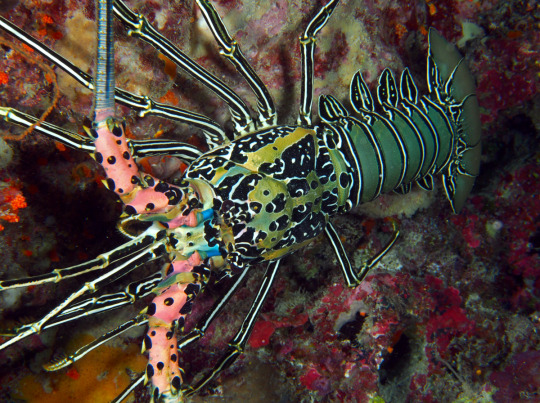
Photo from: Florent’s Guide to the Tropical Reefs
Yes, you read it right! Apparently there exists a lobster (Family Palinuridae) without claws. It may not be the one you’ve exactly imagined when you see those crustaceans whose claws are clamped in an aquarium outside a seafood restaurant but we’re pretty sure these lobsters saved the chef from some pinches. To some punctures? That we don’t know. It is named spiny lobster afterall!
I. Classification
Kingdom: Animalia
Phylum: Arthropoda
Subphylum: Crustacea
Class: Malacostraca
Subclass: Eumalacostraca
Superorder: Eucarida
Order: Decapoda
Suborder: Pleocyemata
Infraorder: Achelata
Family: Panuliridae
Genus: Panulirus
Species: versicolor (Fofonoff et. al. 2018)
II. Distribution: Hi! So my address is just right here..
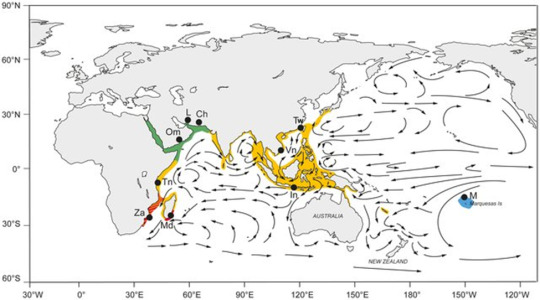
Photo from: Lavery et. al. 2014
Known as the Painted Spiny Lobster, they are native to the Indo-Pacific waters and are distributed in the Red Sea, South Africa, Southern Japan, Northern Australia, Micronesia, and Polynesia. However, the first non-native occurrence is reported in the Brunswick River, Georgia (Fofonoff et. al. 2018).
III. Anatomy: Pinching for that Body Plan
Extenal Anatomy
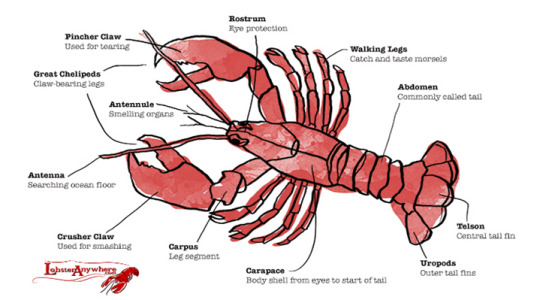
The external anatomy of a true lobster (Family Nephropidae) is composed of two parts: The Cephalothorax and the Abdomen as depicted above. The same is true for spiny lobsters but the Paniluridae traversed a different way in the path called evolution.
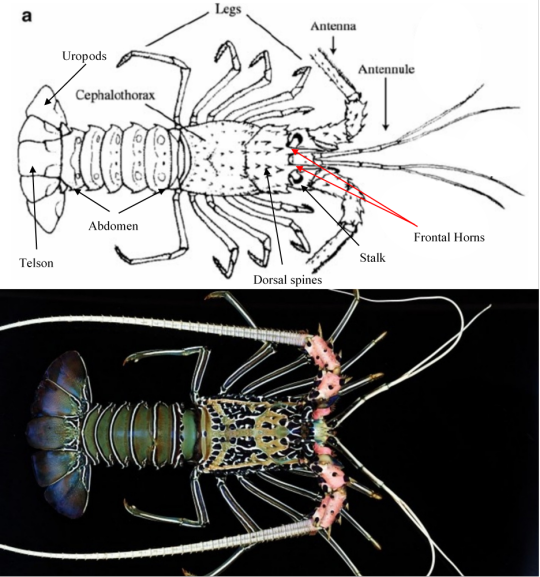
Photo from: Charles Derby 2011 (up) and Nemesis Database Species Summary (down)
So what do true lobsters have that spiny lobsters don’t? Or better yet what makes spiny lobsters unique from other lobsters?
Spiny lobsters lack the prominent claws and rostrum associated with true lobsters and instead have two frontal horns and prominent dorsal spines (Fofonoff et. al. 2018). Its body is tubular in shape with all of its legs not possessing true pincers and the first pair is not enlarged (Tavares). The antennae are cylindrical, enlarged, and longer than its body. The total body length reaches up to 400mm, but the average maximum size is around 300mm. The male spiny lobster tends to be larger than females (Fofonoff et. al. 2018).
Panulirus versicolor’s carapace has a whitish background, with large areas of bluish-black. The abdomen, on the other hand, is predominantly green in color and the telson is a mix of bluish-black and green. The legs are lined with black and blue stripes. The antenna is pinkish-red in the thicker and lower segments and becomes white ringed with black rings in the upper segment (Sutton 2017).

Photo by: Sutton 2017
The following are brief functions of the spiny lobster’s general external anatomy:
Shell: This part is the lobster’s exoskeleton, made from chitin, which serves as a protection for the internal anatomy. However, for the lobster to grow, it sheds its shell in the process called molting.
Antennae and Antennules: The antennae and antennules of the lobster are used as chemoreceptors, which detect odors and chemical signals to help them in locating food, mate, and avoid danger. In spiny lobsters, the antenna is longer than the antennules.
Stalks: For their vision, lobsters have long and stalked compound eyes. Although stalked, their vision is not that excellent, and can only see images in dim light.
Legs: Since they are under Decapoda, they have 10 legs that are used by the animal to navigate its way on the seafloor.
Tail fan: This is the last segment of the lobster. It has a telson as the center tail fin and pairs of uropods at both sides and is used for backward propulsion.
Internal Anatomy
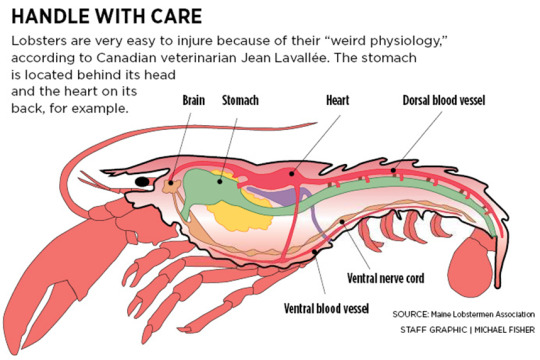
These creatures as a member of the Decapod group have internal organs that are the same as the other species. Its circulatory system is open, unlike humans. They have a single-chambered heart that is composed of muscles and ostia, or openings. Usually, the heart of an adult lobster beats for 50-136 beats per minute.
IV. Reproduction and Life Cycle
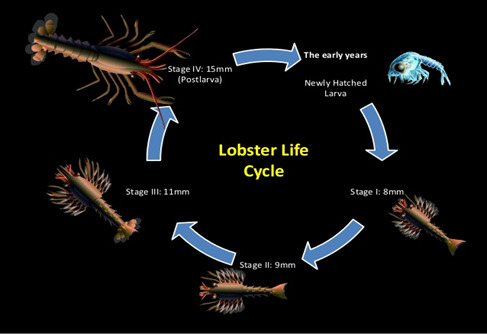
Photo from: Shiran Weerathunga, 2014
A day in a lobster’s life, they reach sexual maturity at the age of 5 to 6 years. The male’s task is to mate with as many female lobsters there is. Usually, they mate to a depth of 50 to 100 feet of water. As they mate, the male will deposit its spermatophore or known as the plaster in the female’s belly. After a while, the female will move to waters less than 30 feet deep, and when she is ready to spawn, she will use the pincers on her fifth walking leg to cut the plaster and fertilize her 80,000 to 800,000 eggs.
These eggs will be deposited under her tail, where she will perform parental duties until they hatch 9 to 10 weeks later. Usually, the larvae are transparent, large, pigmented eyes with long legs, and have little resemblance to adult lobsters. After 7 to 9 months they drift with the currents and eat plankton, after which they go to shallow water and settle at the bottom. Their lifespan is estimated to be 15 years (Cardone 2008; NOAA Fisheries 2020).
Check out this video of spiny lobsters mating!
youtube
and these cute baby lobsters!
youtube
V. Ecology
Habitat
They are found living singly or in groups in shallow water ranging from the low-tide marks up to 15 m depth and often reside in rocky areas, coral reefs, and overhangs that provide them protection (Fofonoff et. al. 2018; Mortiz 2010).

Photo by: Aquapix
Feeding Habit and Predators
Spiny lobsters are nocturnal and carnivore feeders. They even exhibit cannibalism at some point in their lives.They remain hidden in their reef or rock shelters called dens during the day and hunt during night for a variety of mollusks, shrimp, crabs, worms, and sea urchins (Sutton 2017). They use their strong legs to pry open their prey. Meanwhile, spiny lobsters are a delicacy not only to humans but octopus, groupers, and trigger fishes as well.
Be fascintaed with this video on how spiny lobsters protect themselves from a trigger fish.
youtube
VI. Relationship with Humans
Ornamental organisms
The juvenile painted spiny lobster displays a vibrant and attractive coloration of blue and purple body with white antennae which has attracted the market of tropical marine aquarium trade (Fofonoff et. al. 2018).

Photo by: Rokus Groeneveld & Sanne Rejis
For consumption
Spiny lobsters in general are eaten and are regarded as a delicacy. The meat located at the lobster’s abdomen proved to be very tasty and chewy.
youtube
While the lobster is a rich source of copper and selenium, it contains very high cholesterol, thus, it should be eaten in a regulated manner. Additionally, lobster contains zinc, phosphorus, vitamin B12, magnesium, vitamin E, and a small amount of omega-3 fatty acids (Ware 2018).
For livelihood
As of 2011, Panulirus spp. farming has not been reported in the last years to FAO but the species are cultured in Vietnam, Indonesia, Malaysia, and Philippines (Clive and Shanks 2009). Philippine waters are a natural resource of seeds for lobster farming and so there is a regional trade in peuruli and juveniles to establish spiny lobster farming.

Photo from: Mercator Media Ltd 2020
However, an article published in 2018 says that BFAR will bring the lucrative lobster culture to poor communities in Eastern Visayas by providing the cages and feeds to the beneficiaries (Meniano 2018). According to BFAR, the lobster culture is very ideal not only because of the strong demand from China and Taiwan but also because it is very expensive (4,000 per kilogram) (Meniano 2018).
VII. Did you know?
1. Lobsters pee out of their heads. While their anus is located posteriorly, their bladder is found under its brain and the opening is located at the base of their antennae, or just under their eyes!

2. The female lobster takes "her clothes off" to mate. Female lobsters “take off” their shells during molting and it is in this process that they decide to mate as well.

3. Lobsters have two stomachs. To make things even more weird, the first stomach located on its head has teeth! It functions to crush food and the second aids in digestion and is located at the abdomen.

4. Lobsters can detach one of their limbs in an emergency. Don’t worry, they are able to regrow it during the molting process.(Yes, the organism in the video is a crayfish but the mechanism is the same with their lobster cousins!)
youtube
5. In the 17th century, lobster was anything but a delicacy. In fact, a field guide by Motoh from Southeast Asian Fisheries Development Center in 1980 said that the spiny lobster sells for about ₱55/kg in Manila and ₱40/kg in local areas! Now, as stated above, it costs ₱4,000/kg!
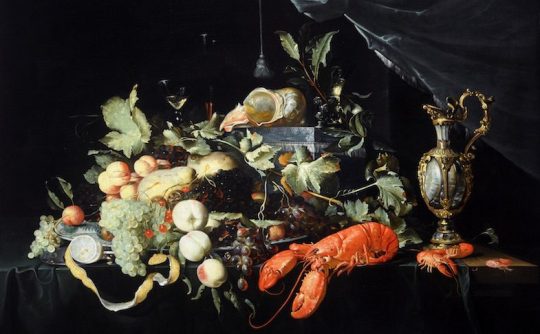
Photo from: Creative Tourist (Courtesy of Barnsley Museum)
6. The blood is known as the hemolymph and is color blue due to the presence of Copper.

Photo from: @WhatTheFFacts on twitter
VIII. References
American Lobster. (2020). Overview of Homarus americanus: The American Lobster. Retrieved November 9, 2020, from, http://www.parl.ns.ca/lobster/overview.htm
Cardone, B. (2008). The Lifecycle of Spiny Lobsters - California Diving News. Retrieved November 10, 2020, from https://cadivingnews.com/the-lifecycle-of-spiny-lobsters/
Clive, J., Shanks, S. (2009). Requirements for the aquaculture of Panulirus ornatus in Australia. Australian Centre for International Agricultural Research, 98-109
Fofonoff PW, Ruiz GM, Steves B, Simkanin C, & Carlton JT. (2018). National Exotic Marine and Estuarine Species Information System. Retrieved November 9, 2020, from, http://invasions.si.edu/nemesis/
Lavery S.D., Farhadi A., Farhamand H., Chan T.Y., Azhdehakoshpour A., Thakur V., Jeffs, A. (2014). Evolutionary Divergence of Geographic Subspecies within the Scalloped Spiny Lobster
Panulirus homarus (Linnaeus 1758). Retrieved November 9, 2020, from,DOI: 10.1371/journal.pone.0097247
Meniano, S. (2018). BFAR eyes lobster farms in 3 Eastern Visayas provinces. Retrieved from Philippine News Agency: https://www.pna.gov.ph/articles/1042610#:~:text=Lobster%20culture%20is%20very%20ideal,high%20preference%20for%20live%20lobsters.&text=A%20fishermen%20can%20raise%20up%20to%20100%20lobster%20juveniles%20in%20a%20cage.
Mortiz. (2010). Family Palinuridae - spiny lobsters. Retrieved from SealifeBase: https://www.sealifebase.ca/Summary/FamilySummary.php?ID=13
Motoh, H. (1980). FIELD GUIDE FOR THE EDIBLE CRUSTACEA OF THE PHILIPPINES. Iloilo, Philippines: SOUTHEAST ASIAN FISHERIES DEVELOPMENT CENTER (SEAFDEC) .
NOAA fisheries. (2020). Caribbean Spiny Lobster. Retrieved November 10, 2020, from https://www.fisheries.noaa.gov/species/caribbean-spiny-lobster#:~:text=Spiny%20lobsters%20may%20live%2015,3.6%20inches%20in%20the%20Caribbean.
Sutton, A. (2017). Painted Spiny Lobster – Facts and Photographs. Retrieved from Seaunseaan: https://seaunseen.com/painted-spiny-lobster-facts-and-photographs-clone/
Tavares, M. (2002). The living marine resources of the western central Atlantic. FAO Species Identification Guide for Fishery Purposes Area 51 and American Society of Ichthyologists and Herpetologists, 294-325.
Ware, M. (2018). Everything you need to know about lobster. Retrieved from Medical News Today: https://www.medicalnewstoday.com/articles/303332
#lobster#spinylobster#paintedspinylobster#Panulirus#Panulirisversicolor#Panuliridae#invertebrates aquaticinvertebrates
19 notes
·
View notes